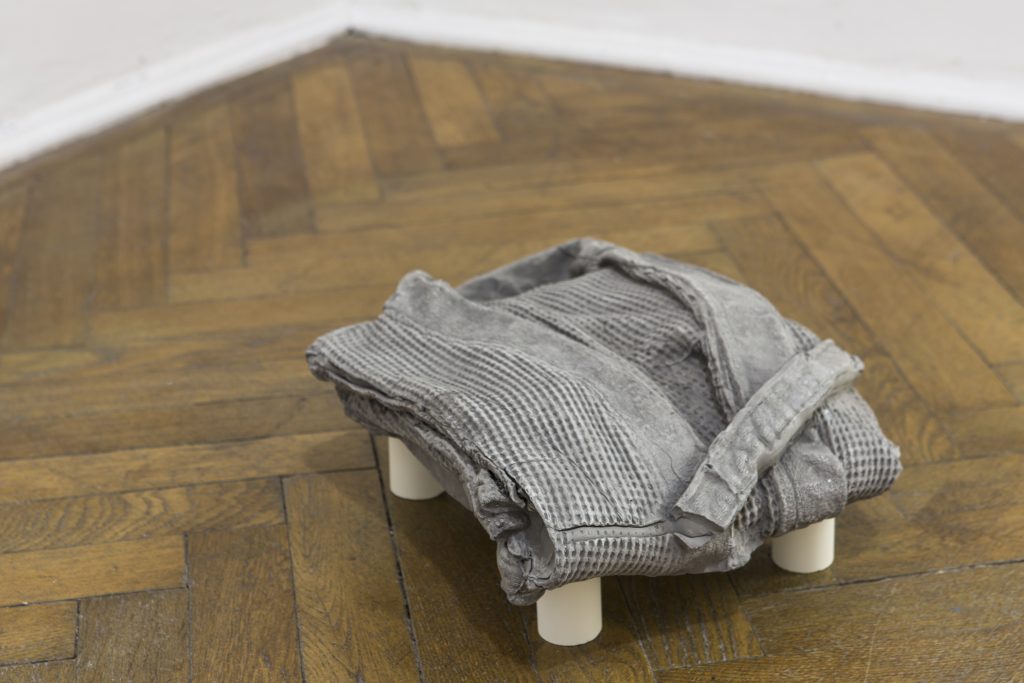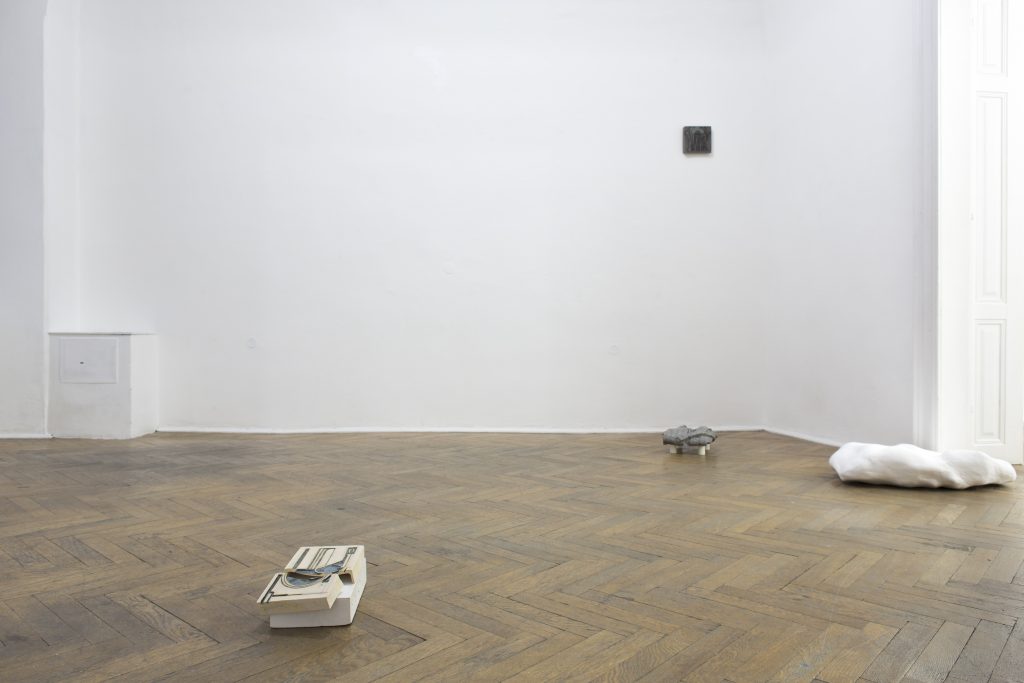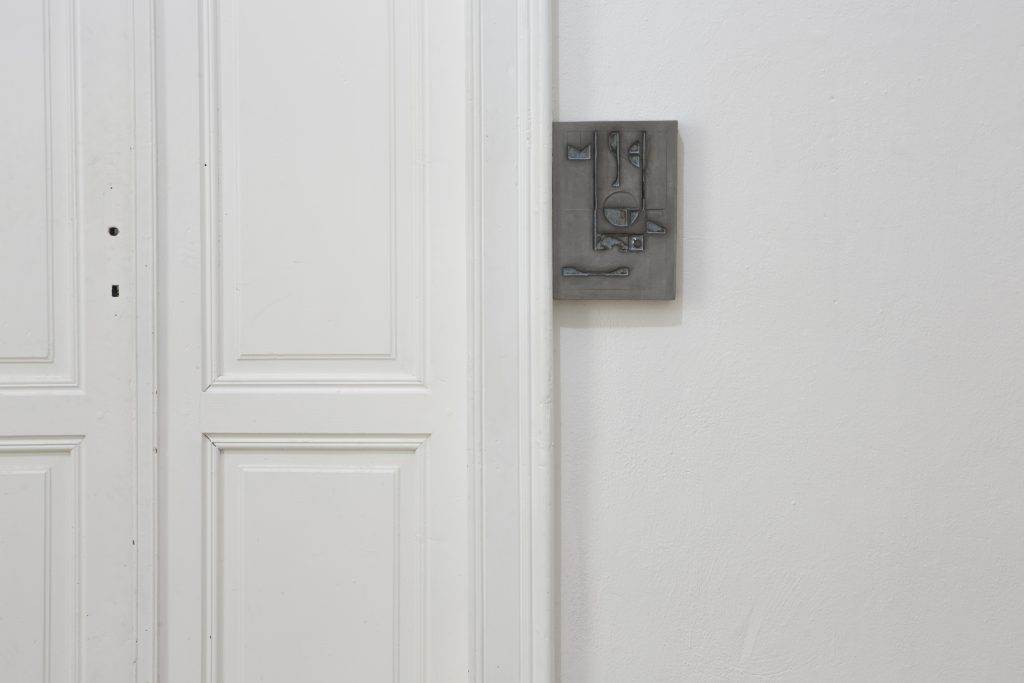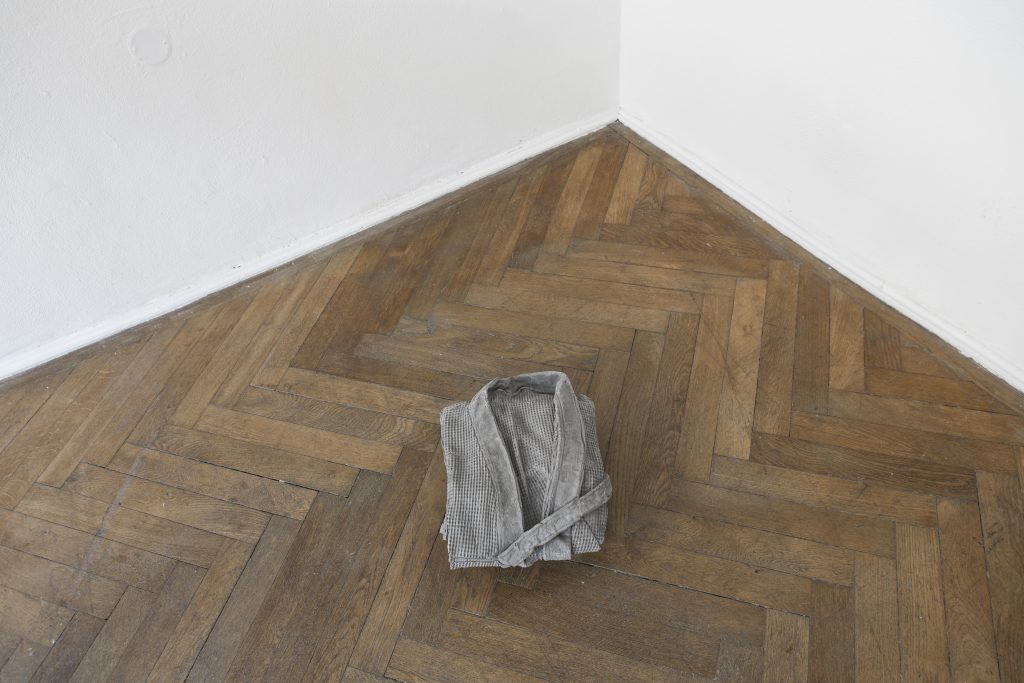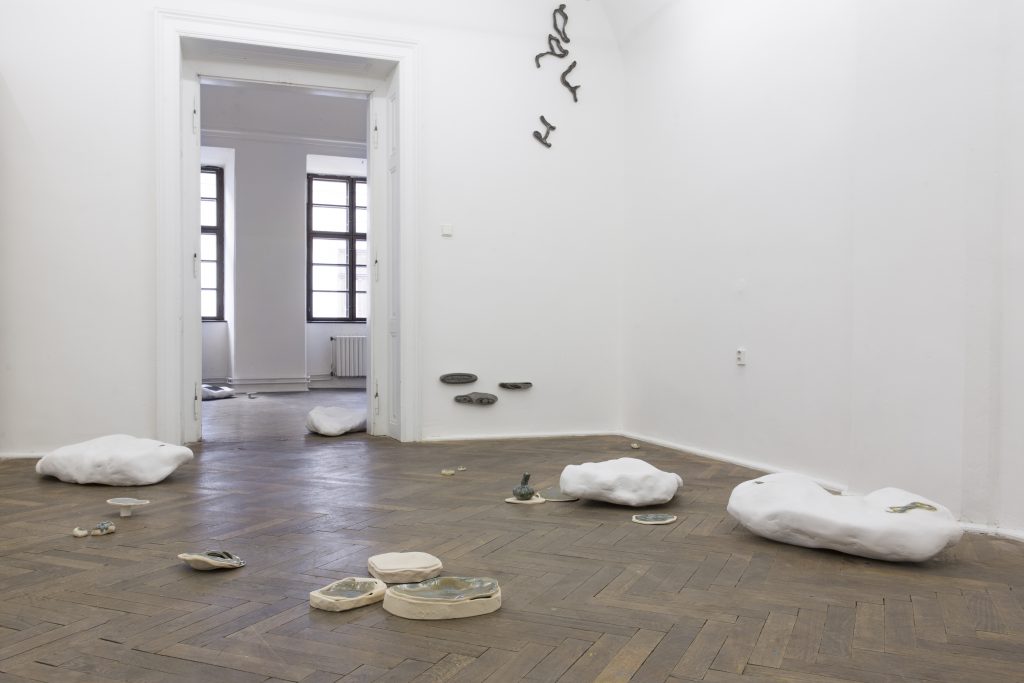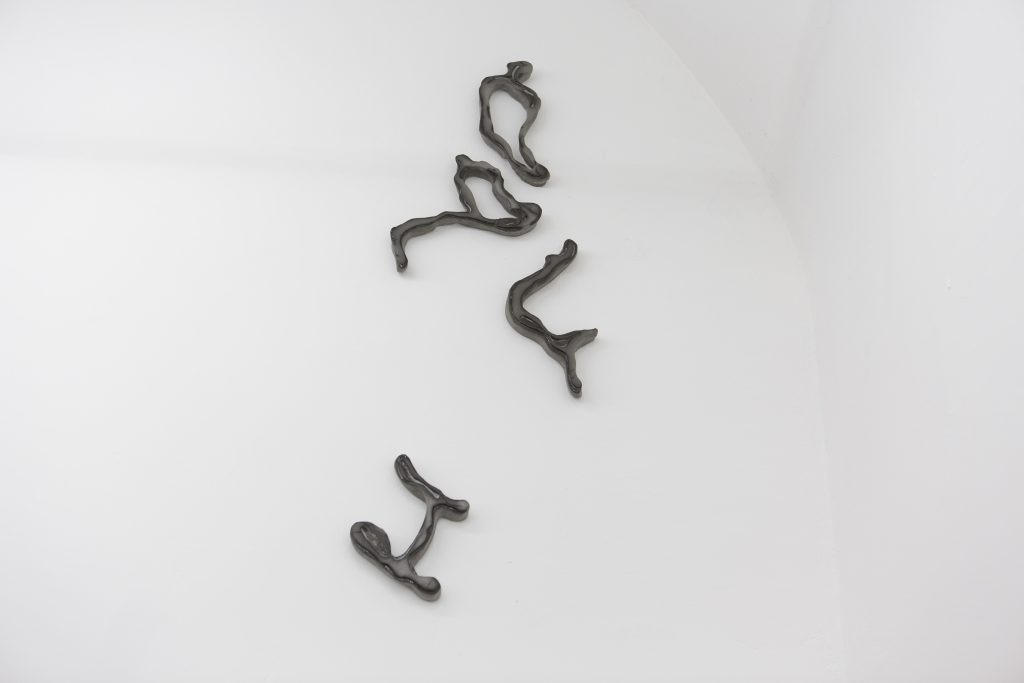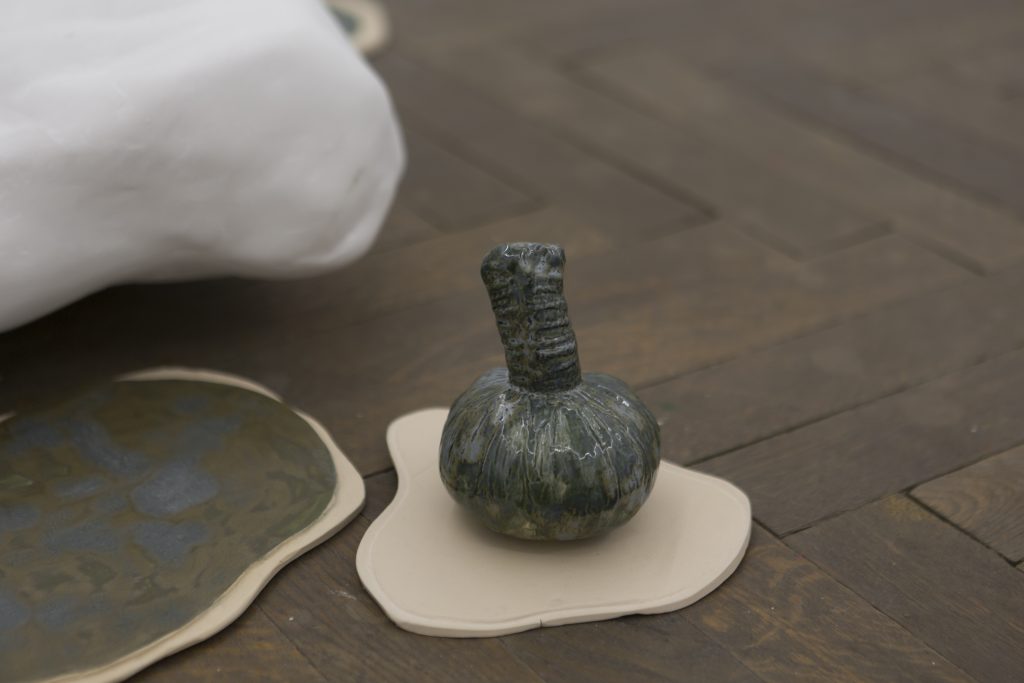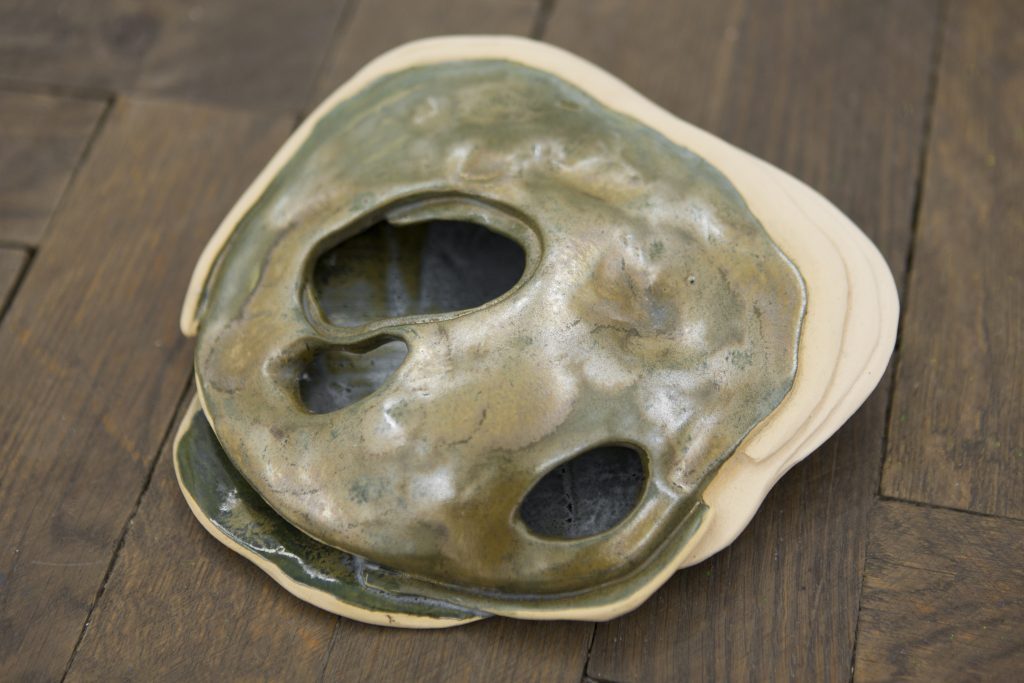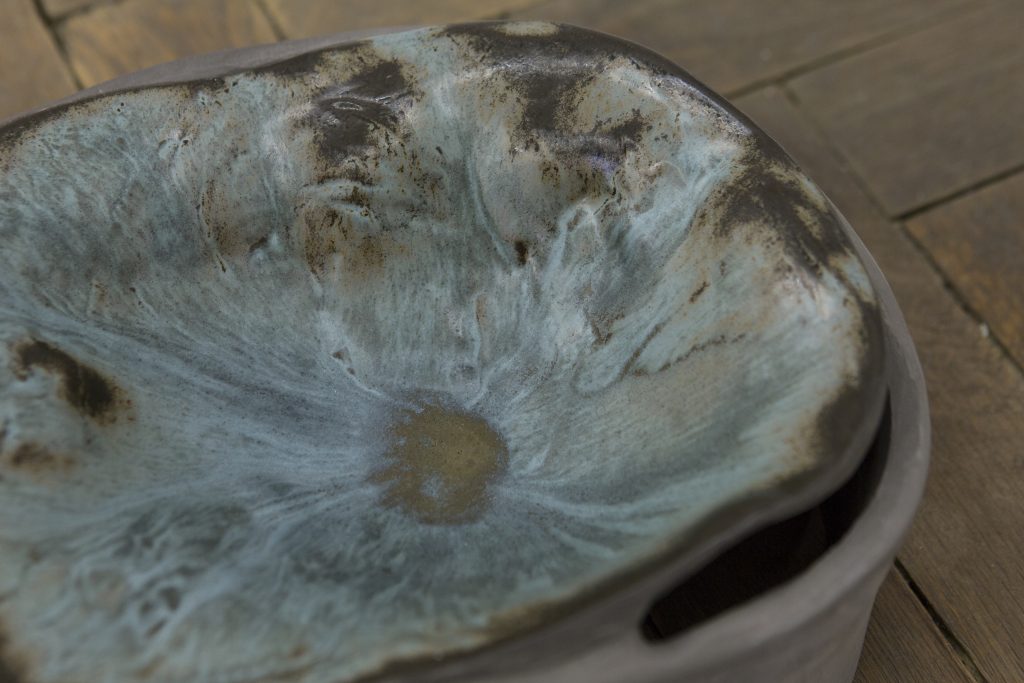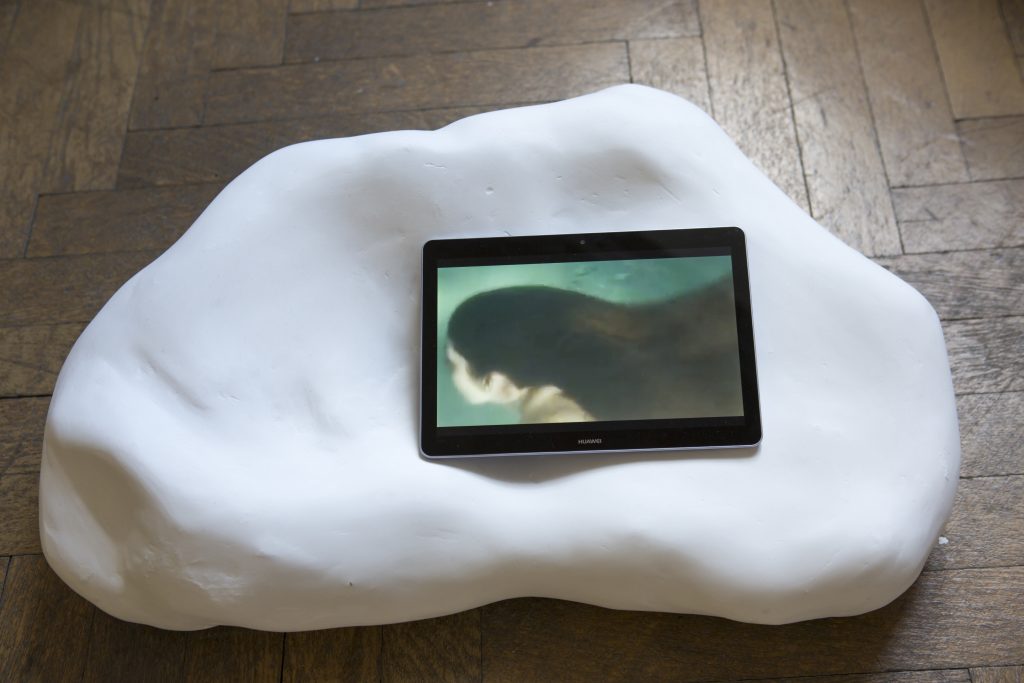Katarína Bajkayová
WATSU
Exhibition opening: 29. 7. 2020 / 19.00 hod. Exhibition's duration: 30. 7. - 30. 8. 2020 Exhibition's curator: Erik Vilím
Places and spaces leave a mark on our emotional as well as physical well-being – they predetermine our behavior, movements, or familiar gestures. The effect of a limited environment, architectural or natural, takes place on several levels: the ratio to the human body, the surfaces of materials, the intensity and movement of light, shapes, the transmittance of the surrounding world, temperature or composition (floor plan); these are all one of the essential meanings of expression of any defined space. Since they can remember, people have tended to attach extraordinary importance to certain places – they needed to separate them from our ordinary (profane) reality and to “push”; supernatural (sacral) value into them. However, it was not only temples and churches, as it might seem, but also nature, whose “nature” had to be suppressed. One such place is a cave, a hollow space under the earth’s surface that disturbs the exterior and interior categories, merely an area in which – as Ivan Laučík once put it – we cannot rely on words. The constant change in relation to the human body, ambiguity of the direction of this place, the damp surface of materials, the softness of shapes, unusual silence complemented by the rhythmic sound of drops, isolation from the outside world, passivity, messiness or seeming incompleteness; all this stimulates a meditative experience. For a man, the cave represents a different space-time in which his sensory experience is radically limited (loss of alternation of day and night, minimal variability of light and weather conditions, or almost absolute silence). However, the passivity and stability of this environment are only apparent – its leading player and “mover” is water. Micro-events always surround the human body in the cave; by pouring, condensing, evaporating, and circulating the water. This transformative and formative power “inside the hills” is the source of its ambivalent archaic symbolism, in which death is connected with birth, and care with destruction. Water means the potentiality of a new being, but at the same time its extinction; it has its own life-giving, but also therapeutic and regenerating function. With its beneficial effects and active properties, water is the central theme of Katarína Bajkayová’s solo exhibition at the Šopa Gallery, which is further “poured” into broader contexts. In the current show, the author expands her original interest in the metaphorical possibilities of the cave motif (Space in the crack I., II., 2018; Record of the route, 2018), finds its other meaningful and symbolic layers and points out the mutual intersections of the cave and the spa. She examines their means of communication to transport the viewer to the gallery environment finally. The grouping of ceramic objects creates the impression of the past presence of water. The soft forms and shapes are complemented by the strict geometry of the floor plans of the spa architecture. Bajkay’s object installation, emphasizing the poetic
possibilities of the material, is a sensitive renewal of eroticism in contemporary art.
Katarína Bajkayová (* 1994, Košice, Slovakia) studied under the guidance of Radovan Čerevka in the 3D Studio of Free Creativity at the Department of Fine Arts and Intermedia FU TU in Košice. She belongs to the youngest generation of artists who are currently entering the Slovak art scene. The upcoming exhibition at Šopa Gallery is one of her first solo presentations.
Exhibitions of this gallery and the realization of the artist’s work in the form of a scholarship are supported by Slovak Arts Council. Slovak Arts Council is the main partner of the project. The project is supported by City Košice.
